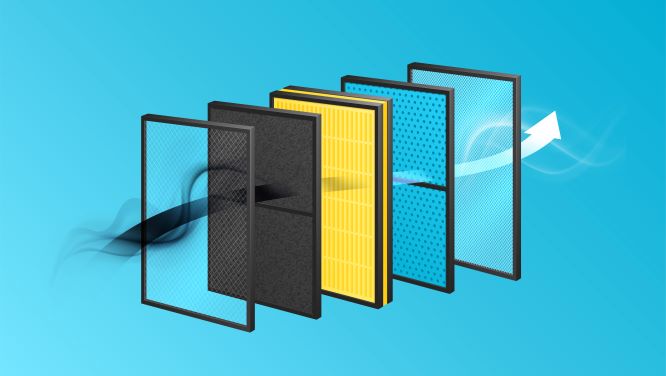Are you struggling to keep your indoor air clean and your HVAC system running efficiently? The 20x30x1 air filter might just be the solution you’re looking for. With its perfect balance of size, efficiency, and versatility, this air filter is a popular choice for homeowners and businesses alike. But how do you choose the right one, install it correctly, and maintain it for optimal performance? Let’s dive into the details.
Understanding the Basics
What is a 20x30x1 Air Filter?
The 20x30x1 air filter refers to an HVAC filter with nominal dimensions of 20 inches by 30 inches and a thickness of 1 inch. However, it’s important to note that the “nominal size” doesn’t always match the actual size. For example, a 20x30x1 filter typically measures about 19.5 x 29.5 x 0.75 inches due to manufacturing and fitting tolerances.
This size is commonly used in residential HVAC systems and some light commercial setups. Its primary purpose is to trap airborne particles like dust, pollen, and allergens, ensuring cleaner indoor air and protecting HVAC components from damage.
How Does an Air Filter Work?
Air filters act as a barrier between your HVAC system and the surrounding air. As the system pulls in air, the filter traps particles such as:
- Dust and dirt
- Pollen and mold spores
- Pet dander
- Smoke and odors (in specialized filters)
- Bacteria and viruses (in high-efficiency filters)
There are two main types of air filters: pleated filters and fiberglass filters. Pleated filters are more effective, thanks to their folded design, which increases surface area and improves particle capture. Fiberglass filters, while cheaper, are less efficient and suitable for basic filtration needs.
Technical Specifications & Options
Standard Features of a 20x30x1 Air Filter
Understanding the technical features of a 20x30x1 air filter is crucial for selecting the right one. Here’s what you need to know:
- Materials: Most 20x30x1 filters are made of synthetic pleated media supported by a wire grid and enclosed in a sturdy paperboard frame.
- Lifespan: Filters typically last 60–90 days, but this can vary based on usage and environmental factors.
- MERV Ratings: The Minimum Efficiency Reporting Value (MERV) rating determines a filter’s effectiveness. Common household filters range from MERV 6 to MERV 13.
MERV Ratings and What They Mean
The MERV rating is a critical factor when choosing an air filter. Here’s a quick breakdown of what each rating can filter:
| MERV Rating | Captures | Best For |
|---|---|---|
| MERV 6–8 | Dust, pollen, large particles | Standard residential use |
| MERV 11 | Pet dander, mold spores, fine dust | Homes with pets or allergies |
| MERV 13 | Bacteria, viruses, smoke, fine particles | Sensitive/allergic households, smoke |
While higher MERV ratings offer better filtration, they may also restrict airflow in some HVAC systems. Always consult your system’s manual before choosing a high-MERV filter.
Popular Brands and Models
Several trusted brands manufacture 20x30x1 air filters, including:
- Filtrete: Known for high-quality materials and performance.
- Honeywell: Offers a variety of MERV-rated filters for different needs.
- Aerostar: A budget-friendly option with reliable performance.
- Filter King: Provides customizable filters and bulk discounts.
Installation & Maintenance
How to Identify the Right Filter Size
To ensure the perfect fit for your HVAC system, measure the filter slot or the existing filter. Remember to account for the difference between nominal and actual dimensions.
Step-by-Step Filter Replacement Guide
Replacing your 20x30x1 air filter is easier than you might think. Follow these steps:
- Turn off the HVAC system: Safety first!
- Locate the filter: Check the air return vent or the HVAC unit.
- Remove the old filter: Note the airflow direction marked on the side.
- Install the new filter: Ensure the airflow arrow points toward the HVAC system.
- Secure the filter: Close the vent or filter slot properly.
- Restart the system: Enjoy cleaner air!
How Often Should You Change Your 20x30x1 Air Filter?
The general rule is every 60–90 days, but several factors can affect this:
- Pets: More shedding means more frequent changes.
- Allergies: If you’re sensitive to allergens, change filters more often.
- Usage: HVAC systems running year-round may need monthly replacements.
Benefits of Upgrading or Regularly Changing Your Air Filter
Health and Indoor Air Quality
A clean air filter improves indoor air by reducing allergens, dust, and odors. This is especially beneficial for individuals with respiratory ailments or allergies.
Protection for Your HVAC System
Regular filter changes prevent debris buildup, extending the lifespan of your HVAC system. This also helps maintain energy efficiency, reducing utility bills.
Special Needs: Pets, Allergies, and Smoke
For households with pets, allergies, or exposure to smoke, higher MERV-rated filters or activated carbon filters are ideal.
Choosing the Best 20x30x1 Air Filter for Your Needs
Comparative Table: Types of 20x30x1 Filters
| MERV Rating | Purpose | Lifespan | Price Range | Best For |
|---|---|---|---|---|
| MERV 6–8 | Dust, pollen, large particles | 60–90 days | $5–$10 | Standard residential use |
| MERV 11 | Pet dander, mold spores, fine dust | 60–90 days | $10–$20 | Homes with pets/allergies |
| MERV 13 | Bacteria, viruses, fine particles | 60–90 days | $15–$30 | Sensitive/allergic households, smoke |
Factors to Consider When Buying
- MERV vs. Airflow: Higher MERV isn’t always better if it restricts airflow.
- Price vs. Performance: Balance budget with efficiency.
- Reusable vs. Disposable Filters: Reusable filters are eco-friendly but require maintenance.
Frequently Asked Questions (FAQ)
- Can I use a different size filter if my 20x30x1 is out of stock?
No, using the wrong size can reduce efficiency and damage your HVAC system. - How do I know if I need a higher MERV rating?
If you have allergies, pets, or live in a polluted area, a higher rating is beneficial. - Are thicker filters better than 1-inch filters?
Thicker filters can last longer and capture more particles but may restrict airflow in certain systems. - How do I dispose of used filters?
Seal them in a plastic bag and dispose of them with household trash.
Where to Buy 20x30x1 Air Filters
You can find 20x30x1 air filters at major retailers like:
- Home Depot: Wide selection of brands.
- Walmart: Affordable options.
- Lowes: Known for discounts and deals.
- FilterBuy: Ideal for bulk purchases.
Environmental Impact & Sustainability
- Eco-Friendly Filters: Some reusable filters are washable, reducing waste.
- Proper Disposal: Always dispose of used filters responsibly.
- Energy Savings: Clean filters improve HVAC efficiency, lowering energy consumption.
Conclusion
The 20x30x1 air filter is a simple yet essential component for maintaining clean air and protecting your HVAC system. By choosing the right filter, installing it correctly, and replacing it regularly, you can enjoy healthier air, lower energy bills, and a longer-lasting HVAC system. Ready to make the switch? Find the best 20x30x1 air filter for your needs today!



